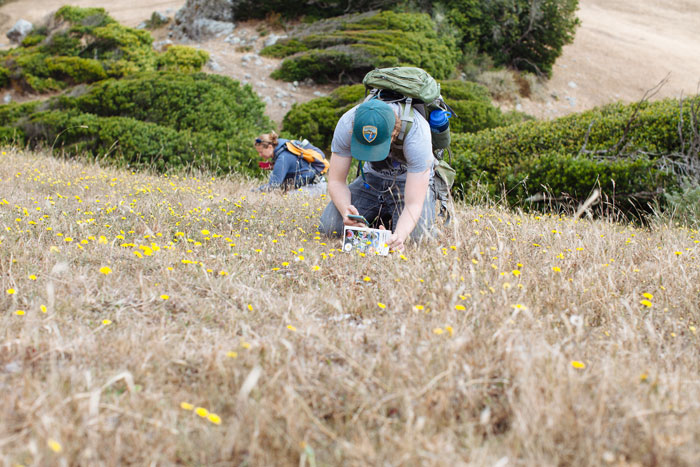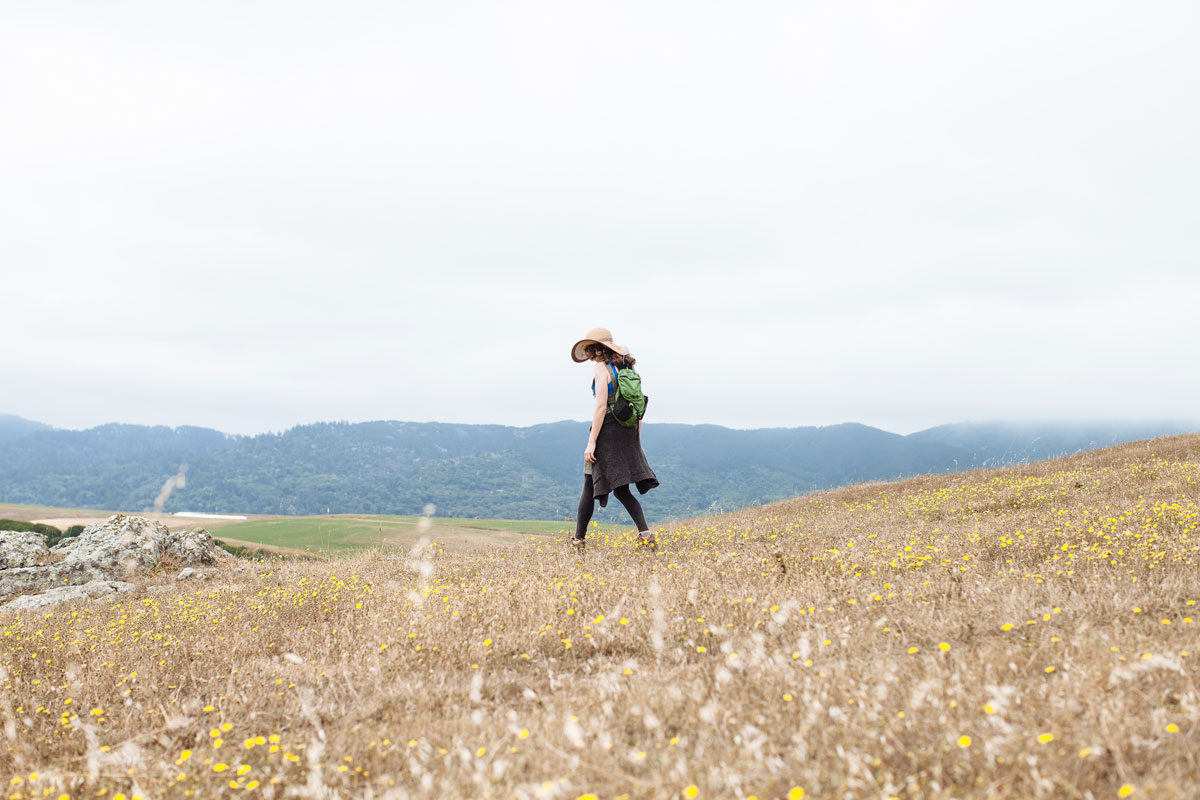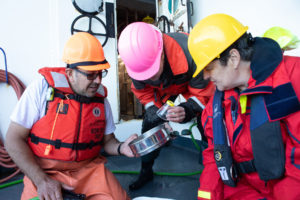he 25 people standing on the rocky hillside of Millerton Creek Ranch have arguably some of the best views in Marin County. It’s 9:30 a.m. and the low-hanging fog has just lifted, uncovering a dramatic vista of rolling yellow hills dusted with wildflowers. Turkey vultures lazily ride a thermal air current in upward spirals, and a northern harrier takes off rapidly over the hill, toward the distant glint of Tomales Bay. It is a quiet morning, save for the whistle of the relentless wind, which carries the scent of saltwater and bay laurel trees over the slopes. The scene of this 864-acre ranch is staggeringly beautiful, and none of these people have ever been here before.
Not a single one of the 25 people is looking at the view. Instead, heads down, phones out, they scour the hillside for life as part of an organized effort to understand the biodiversity of this ranch, which the Marin Agricultural Land Trust (MALT) has just acquired.
A bioblitz of agricultural land is unusual. MALT Conservation Director Jeff Stump sees it, though, as redemptive: a chance to document the life of a piece of land he almost lost to development.
“This time, we’re going to give this land what it deserves,” Stump said.

ntil former owner Bob Borello’s death in 1992, this land operated as a sheep farm and rock quarry. Since 1992, MALT has fought to protect the ranch. Its abundant water sources—Millerton Gulch Creek, several natural springs, and two large reservoirs—contribute to a fascinating, diverse natural ecology. And, for MALT, the ranch is the connecting piece to make 8,454 continuous acres of protected land, between Millerton Point (part of Tomales Bay State Park) and the MALT-protected Giacomini Dairy and Panfiglio Ranch. But its size, stunning landscape, and ample water—the very reasons to protect it—also make for prime real estate. Developers’ plans for upscale homes threatened MALT’s hopes for conservation. Now, after 23 years of uncertain ownership, trash and scrap metal litter the property.
In 2009, MALT had a conservation easement in the works with local producers Mike Giammona, who raises cattle for grass-fed beef, and Andrew Zlot, whose water buffalo provide milk for Double 8 Dairy—but a private developer bought the ranch before terms could be finalized. Earlier this year, the developer’s plans for the land fell through, and MALT leaped at the opportunity. With a loan from the Packard Foundation, MALT purchased the property, and leased it to Giammona and Zlot. Now, they hope to learn as much as they can about the land before selling it to Giammona and Zlot in four years. With a conservation easement, MALT will set the terms for the use of this land—indefinitely.
Standing in front of the group of 70-plus volunteers before the day’s activities began, Stump rubbed his hands together in excitement. “Information leads to conservation,” he said. “This land has suffered years of abuse, and if we’re going to restore it, we need to know what’s out there.”
The California Academy of Sciences, which partnered with MALT for the event, has a broader goal: to gather as much data as possible and contribute to a worldwide knowledge bank. “Why do we bioblitz an agricultural land?” Academy Citizen Science Coordinator Rebecca Johnson asked the group before they set off. “The fact is, there are too many organisms on this planet and not enough naturalists.”
MALT had specific goals as well: to get a better sense of the distribution of invasive woolly distaff thistle — as part of the conservation easement, MALT will advise Giammona and Zlot on long-term thistle control — and to learn more about the different plant species around the creek, to aid Giammona’s plans for creek restoration.
But Stump encouraged volunteers not to become too single-minded in their data collection.
“Take some time to get to know the land,” he said. “Explore it and enjoy it. For decades, not many people have.”

he group of citizen scientists surveying the hillside under the guidance of coastal wetlands botanist Michelle Cooper was anything but single-minded. Cooper, with her iPhone and California native plant guide in hand, listed off plant species with encyclopedic knowledge and affectionate familiarity. “Remember, everyone,” she said, holding up a hollow-centered yellow grass with a mischievous smile, “Reeds are round, sedges have edges, and grasses, like you-know-what, have holes in them.”
A few minutes later, a citizen naturalist asked Cooper about a long stalk tipped with a whirled cluster of purple flowers. She explained to the group that this was Prunella vulgaris, a native species “with just about the ugliest name you’ll ever find on such a lovely plant.” She passed a yellow tarplant flower around the group, encouraging the volunteers to smell the pungent scent that earned the plant its title. She stopped at one point and crouched low to the ground, eyes wide, to point out the spiky growth of a soap plant. “They’re full of mystery,” she said. “They only flower in the evening, coming out like stars at night. Look for them on these roadsides when you drive, white blossoms lighting your way home.”
t noon, as the heat of the day began to set in, the group left the ranch and reconvened at the Point Reyes Station community center, The Dance Palace, to review the results. In three hours, 50 observers had uploaded more than 1,360 individual data points to iNaturalist, including more than 170 different species.
“I’ve said this time and again, but this land is a diamond in the rough,” Stump said. “We’re lucky to have you guys help us learn more about it.”
But Suzanne Marr, who made the drive in the early morning from her home in Berkeley, felt like the lucky one. At 10:30, halfway through her documenting efforts, she squatted among the grasses on the hillside and swigged from her water bottle. “Because it’s a private agricultural property, I’d never get to see this land if it wasn’t for the bioblitz,” she said. “But I got to spend my morning here. Just look at this place.”
She gestured out to the acres of wind-rippled hills below her, and to the blue smear of mountains beyond.
“It only makes sense that I should give something back.”





